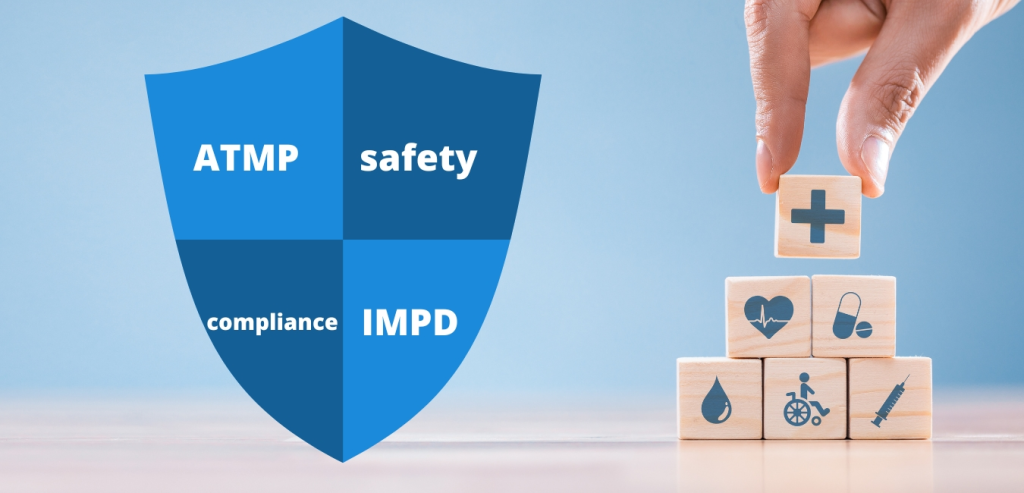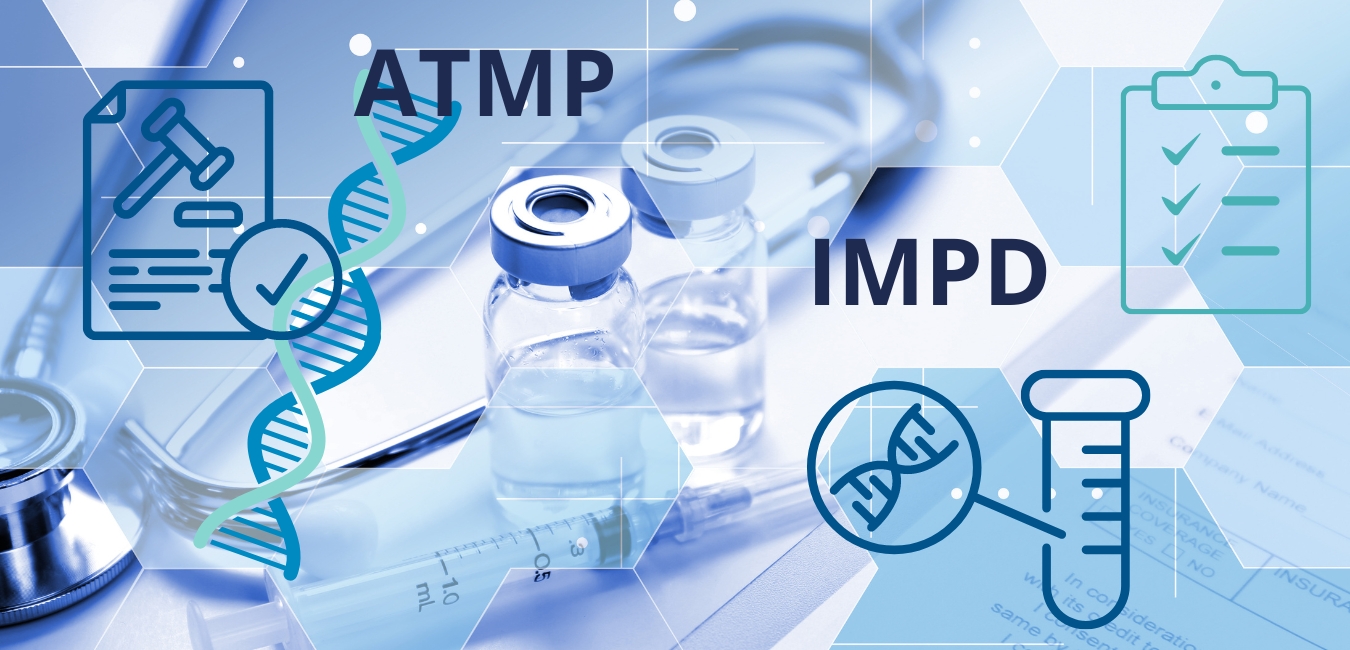In recent years, a new class of medical products, named Advanced Therapy Medicinal Products (ATMPs), consisting of cellular or genetic components has quickly moved from Research and Development labs to clinics, mostly as products under evaluation in clinical trials. These new therapeutic options already have and surely will revolutionize the treatment of many previously incurable diseases and, thus, change the business landscape of the pharmaceutical and biotechnology industry.
Like every medicinal product, also an ATMP has to be well described prior each clinical trial. Hence, it is necessary to prepare a complete set of relevant documents required by law and then obtain approval for the clinical trial issued by the respective national agency. In this context, one of the key documents that need to be prepared before submitting an application is the Investigational Medicinal Product Dossier (IMPD).
IMPD for ATMP
The IMPD is a document summarizing the development, manufacturing and quality control as well as non-clinical and clinical development of an investigated medicinal product (IMP) or more precisely ATMP, an advanced therapy investigational medicinal product (ATIMP)
The guiding principle of clinical trials is to do no harm to the patient. Since quality issues may have a direct negative impact on clinical trial participants, the agencies pay special attention to the quality of the proposed IMP.
Currently, there is no formal framework for the IMPD for ATIMPs in the EU. However, it needs to be emphasized that in 2019 EMA published a draft “Guideline on quality, non-clinical and clinical requirements for investigational advanced therapy medicinal products in clinical trials“. This draft document provides important or even crucial guidance on the structure and data requirements for a clinical trial application for exploratory and confirmatory trials of an ATIMP. Although, it is not a formally binding document (at the time of writing this article), in practice it is a key source to follow when creating an IMPD for an ATIMP. It also often serves as an important reference when there is a discussion with Agencies on a particular content or lack thereof.
IMPD structure
The mentioned draft guideline for ATIMP bases its proposed IMPD structure on the Common Technical Document (CTD). Accordingly, the dossier should be divided into two sections, respectively S and P. The S section should contain data referring to the manufacturing of active substance, such as description of vector or cellular component manufacturing and respective control. In the section P, it is necessary to provide data on the manufacturing, formulation of the finished product, for example, formulation of the solution containing vectors or modified cells. It is worth noting that it may require a certain effort to define what is actually the active substance. As based on the draft guideline, for certain ATMPs, the starting material, the active substance and the finished product can be closely related or nearly identical. In those cases where the ATMPs production is a continuous process, it is not necessary to repeat the information that was already provided in one section.For such cases, it is more convenient to describe the entire manufacturing and quality control process in one section. The priority is laid on the fact that the quality is described, but the exact place of respective descriptions may be subject to certain interpretations and is strongly established on a case-by-case basis.

Type of data
The IMPD should describe the manufacturing process and quality control strategy that ensures patient safety. Regarding qualitative data, the document should include information such as (but not strictly limited to):
- The Name and composition of a single batch of Drug Product;
- Data on pharmaceutical development, especially data referring to the safety of the product,
- The Name and address of a manufacturer;
- Description of the manufacturing process, including information on raw materials and other components used during production;
- Quality control strategy for critical steps and intermediates;
- Process validation and/or evaluation data, especially confirming the asepticity of the process. The manufacturing process for ATIMPs is not expected to be validated for early clinical trials but appropriate monitoring and control measures should be implemented;
- Information on the choice of excipients and their properties. Particular attention should be paid to the safety of excipients of human or animal origin and novel excipients;
- Specifications for the active substance or/and the drug product with acceptance criteria and quantitative limits (if applicable). The IMPD should also include justification of parameters and their limits in the specification for all parameters;
- Analytical procedures for all tests included in the specification. It is necessary to demonstrate that the methods are suitable for their intended use at the time of manufacturing. Validations of sterility and microbial assays, as well as replication competent retrovirus testing are required whatever the clinical trial phase;
- Exemplary batch results for batches manufactured according to the described procedures. Optimally, the results for three batches at a given scale of the product should be enclosed;
- Information on the container closure system for active substance or/and the drug product;
- The information referring to the stability of the product (also in-use stability) and its shelf-life. The stability data should cover stability indicating parameters from the specification and appropriate limits.
In case of the reconstitution process after the final formulation, it is necessary to provide a description of the process along with a summary of its robustness and consistency, or even validation, and stability data after reconstitution.
Special considerations
The IMPD gathers a variety of information about the development and manufacture of an active substance/drug product. Therefore, the development and manufacturing of an ATIMP should be considered in light of the relevant legal and quality requirements long before the creation of the IMPD itself. Failure to meet the requirements or neglecting certain aspects may significantly delay or even hold the start of clinical trial and/or increase the costs of the project.
As mentioned above, patient safety is a key issue and a major aspect analyzed during the assessment of the IMPD by relevant authority. Special attention should be paid to risk related to viruses and TSE/BES transmission. Therefore, all materials of human or animal origin used in the manufacturing process of both the active substance
and the medicinal product or materials coming into contact with active substance or medicinal product during the manufacturing process should be identified. It is necessary to assess the risk with respect to potential contamination with adventitious agents. It is strongly recommended to avoid such materials or to use materials from well-established sources, for example commercially available raw material intended for manufacturing product for clinical use (if available). Please note, registered medicinal products are also suitable to be used as such materials, since their quality is well established.
Although not strictly related to the IMPD, it is here worth noting, that the manufacturing process of an ATMP may be complicated and lengthy which often requires complex technical facilities and extensive knowledge. It should be therefore emphasized that in the EU, medicinal products, including ATMP, can only be manufactured under GMP environment. Furthermore, in 2017 the European Commission published a set of guidelines on good manufacturing practice (GMP) specific to Advanced Therapy Medicinal Products which all ATMP or ATIMP manufacturers must comply with. This fact should be kept in mind when looking for a potential manufacturer of the investigational and subsequently the to-be-registered product.

The IMPD for an ATMP is a key document for a clinical trial approval. This document must provide information confirming that the product itself and the way it is manufactured do not pose a risk to patients. The data included in the IMPD is obtained throughout the entire product development process, should be well organized, but most of all should be of appropriate quality. Therefore it is necessary to carefully plan all stages of development, manufacturing and substance/product control to comply with the ATMP regulations and requirements published by EMA (in case of EU). The area of ATMP is relatively new and growing. As such, even drafts of guidelines are of substantial importance. Incorrect research, development and manufacturing planning or failure to meet the requirements may have serious consequences such as delay of registration of clinical trial or even freezing of the whole project. Finally, it is recommended to cooperate with specialized consulting companies or experts during planning of development of an ATMP and creation of respective IMPD. This may help avoid many challenges, which may not be intuitive from a research-based perspective, but are obvious regulatory-wise.
If you have any questions about IMPD or any other ATMPs topics, please contact us.


